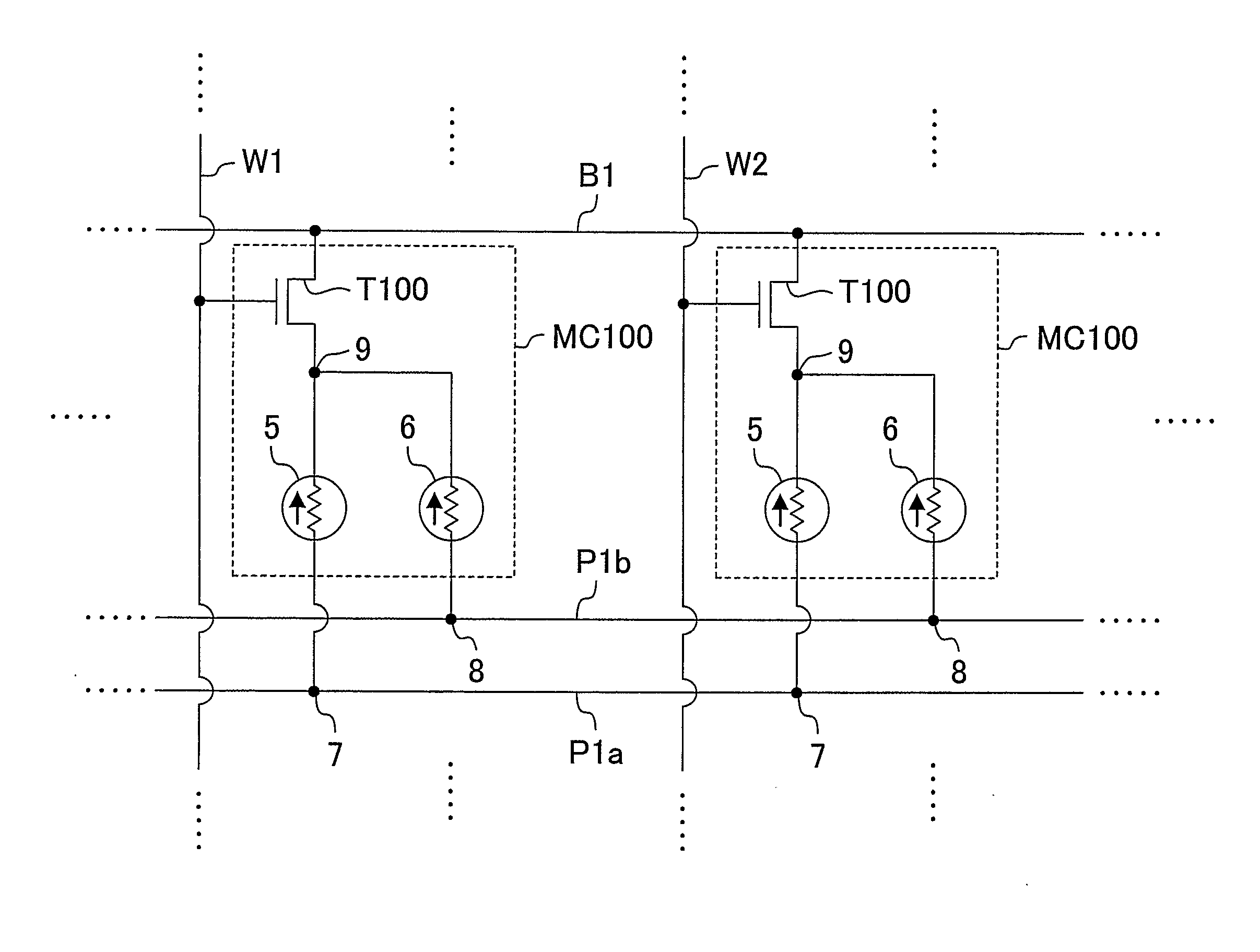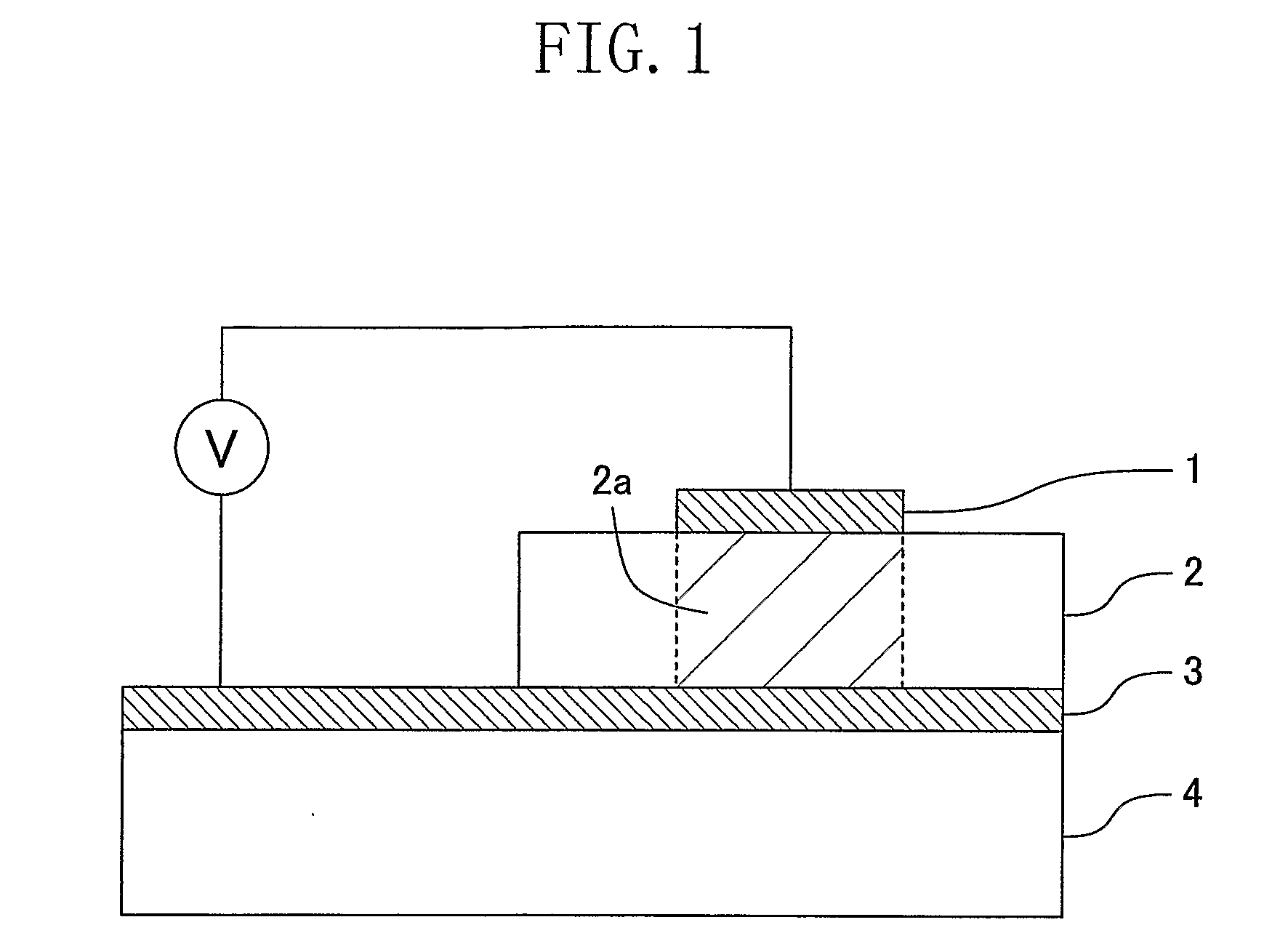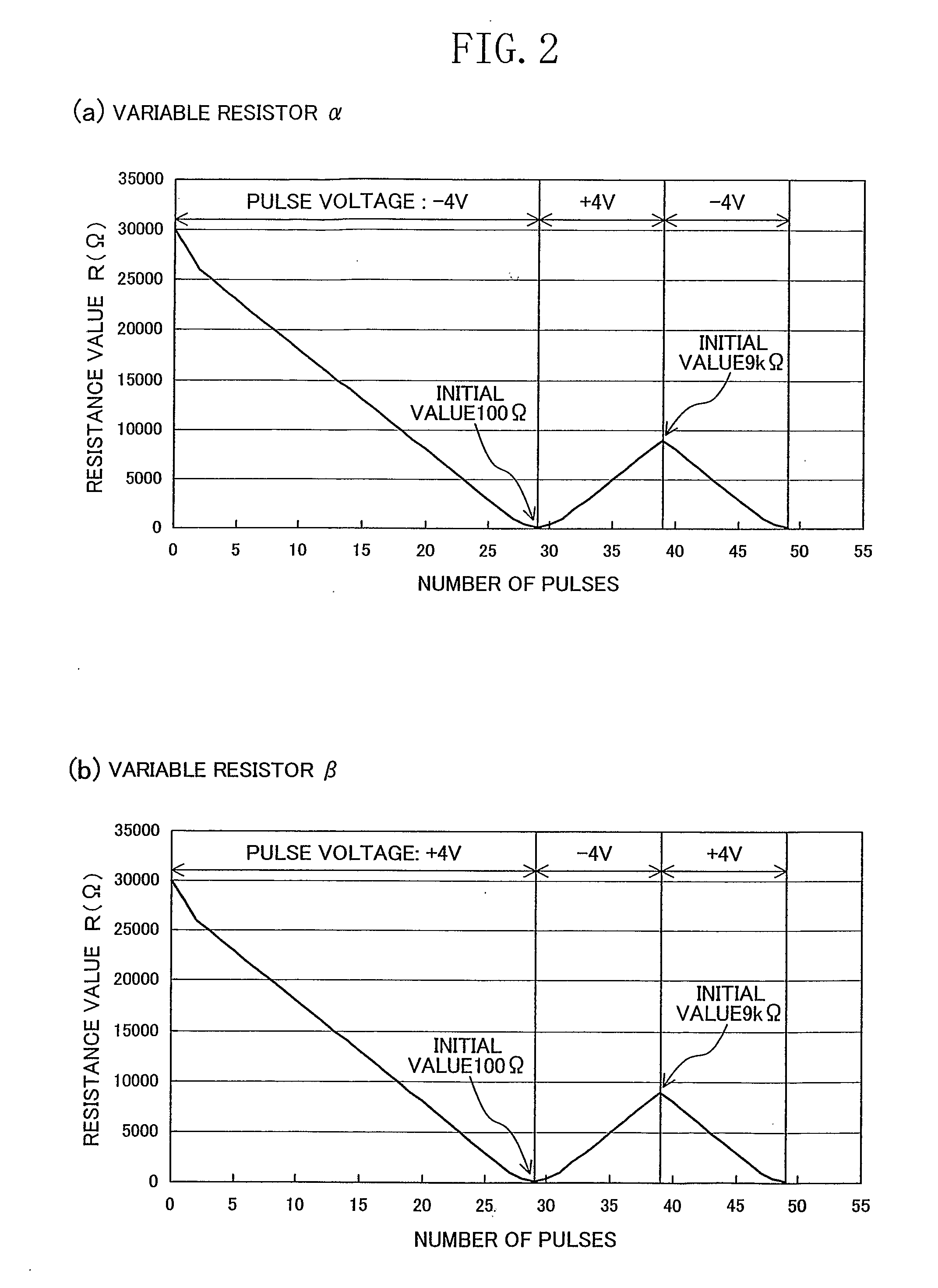Memory device, memory circuit and semiconductor integrated circuit having variable resistance
a memory circuit and integrated circuit technology, applied in semiconductor devices, digital storage, instruments, etc., can solve the problems of increasing recording/reproduction errors, s/n deterioration, etc., and achieves short rewritable life, long write time, and high write power
- Summary
- Abstract
- Description
- Claims
- Application Information
AI Technical Summary
Benefits of technology
Problems solved by technology
Method used
Image
Examples
embodiment 1
Configuration of Memory Device
[0049]FIG. 4(a) shows a configuration of a memory device according to a first embodiment of the present invention. In the memory device, variable resistors 5 and 6 whose resistance values vary depending on the polarity of an electrical pulse applied thereto are connected in series between a power supply terminal 7 and a power supply terminal 8. An input / output terminal 9 is connected to an interconnect node connecting the variable resistors 5 and 6. The variable resistor 5 has its initial resistance value set at 100 Ω through the initialization process described with reference to FIGS. 2 and 3. The resistance value of the variable resistor 5 increases when a pulse voltage for setting the input / output terminal 9 to positive is applied between the input / output terminal 9 and the power supply terminal 7 whereas the resistance thereof value decreases when a pulse voltage for setting the input / output terminal 9 to negative is applied. The variable resistor ...
embodiment 2
Configuration of Memory Device
[0057]FIG. 7(a) shows a configuration of a memory device according to a second embodiment of the present invention. A variable resistor 6 in this memory device has its initial resistance value set at 9 kΩ through the initialization process described with reference to FIGS. 2 and 3. The resistance value of the variable resistor 6 decreases when a pulse voltage for setting a power supply terminal 8 to positive is applied between the power supply terminal 8 and an input / output terminal 9 and the resistance value thereof increases when a pulse voltage for setting the power supply terminal 8 to negative is applied. The other part of the configuration is similar to that shown in FIG. 4(a).
Recording of Information in Memory Device
[0058] To record information in this memory device, as shown in FIG. 7(a), a recording pulse voltage having a positive pulse (voltage: +2V and pulse width: 10 ns) and a negative pulse (voltage: −2V and pulse width: 10 ns) is applie...
embodiment 3
Circuit Configuration of Memory Array Circuit
[0061] A circuit configuration of a memory array circuit according to a third embodiment is shown in FIG. 8. This memory array circuit is an example in which the memory device described in the second embodiment (FIG. 7) is incorporated in a transistor circuit. In the memory array circuit, a plurality of memory cells MC100 are arranged in rows and columns, i.e., in a matrix pattern. A plurality of word lines W1, W2, . . . are arranged in columns. A plurality of bit lines B1, . . . are arranged in rows. A plurality of plate lines P1a, P1b, . . . are also arranged in rows. Out of the plurality of memory cells MC100 included in the memory array circuit, FIG. 8 shows a portion including two memory cells MC100 associated with the word lines W1 and W2, the bit line B1 and the plate lines P1a and P1b.
[0062] Each of the memory cells MC100 includes variable resistors 5 and 6 and a transistor T100. The transistor T100 and the variable resistor 5 a...
PUM
 Login to View More
Login to View More Abstract
Description
Claims
Application Information
 Login to View More
Login to View More - R&D
- Intellectual Property
- Life Sciences
- Materials
- Tech Scout
- Unparalleled Data Quality
- Higher Quality Content
- 60% Fewer Hallucinations
Browse by: Latest US Patents, China's latest patents, Technical Efficacy Thesaurus, Application Domain, Technology Topic, Popular Technical Reports.
© 2025 PatSnap. All rights reserved.Legal|Privacy policy|Modern Slavery Act Transparency Statement|Sitemap|About US| Contact US: help@patsnap.com



